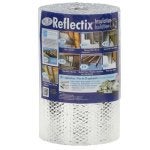First off, amazing forum I so happened to stumble upon when searching how to lower humidity in my home!  utergreet:
utergreet:
I live near Houston, Tx and as many of you know it is hot and humid. I have read many threads regarding this topic and have learned a lot (thank you).
I have not yet to seem to have seen a question I have so here it goes a long w/ some background...
Brand new home built 2 years ago. 3700 sq ft 1 1/2 story home. 2 units. One controls all the bedrooms with thermostat in master bedroom. The other controls the rest of the house and the upstairs
(both have their own thermostat and the unit has a Honeywell TruZone control in the attic.
Indoor humidity in my home ranges from 57% - 64% (depending on ac demand) while keeping our Carrier Edge thermostat at 75 - 76 degrees.
I did change the thermostats run cycle from a default of 4, down to a 2. Now, my question is lowering my blower speed. I have a Goodman furnace (was not successful when looking
for a model number) but after looking at the electrical diagram it appears to have 4 speeds: HIGH, MED HIGH, MED and LOW. Cooling is on high. And heat is on MED HIGH AND LOW (why does
heat have 2 blower speeds?) Anyway, my question is would I need to get someone to move my cooling setting to MED HIGH or MED? Can cooling and heat share the same blower speed? I'm trying
to lower my humidity down and I'm trying to get an answer to be able to tell a HVAC TECH exactly what I'm trying to do.
Thank you in advance!
I live near Houston, Tx and as many of you know it is hot and humid. I have read many threads regarding this topic and have learned a lot (thank you).
I have not yet to seem to have seen a question I have so here it goes a long w/ some background...
Brand new home built 2 years ago. 3700 sq ft 1 1/2 story home. 2 units. One controls all the bedrooms with thermostat in master bedroom. The other controls the rest of the house and the upstairs
(both have their own thermostat and the unit has a Honeywell TruZone control in the attic.
Indoor humidity in my home ranges from 57% - 64% (depending on ac demand) while keeping our Carrier Edge thermostat at 75 - 76 degrees.
I did change the thermostats run cycle from a default of 4, down to a 2. Now, my question is lowering my blower speed. I have a Goodman furnace (was not successful when looking
for a model number) but after looking at the electrical diagram it appears to have 4 speeds: HIGH, MED HIGH, MED and LOW. Cooling is on high. And heat is on MED HIGH AND LOW (why does
heat have 2 blower speeds?) Anyway, my question is would I need to get someone to move my cooling setting to MED HIGH or MED? Can cooling and heat share the same blower speed? I'm trying
to lower my humidity down and I'm trying to get an answer to be able to tell a HVAC TECH exactly what I'm trying to do.
Thank you in advance!








